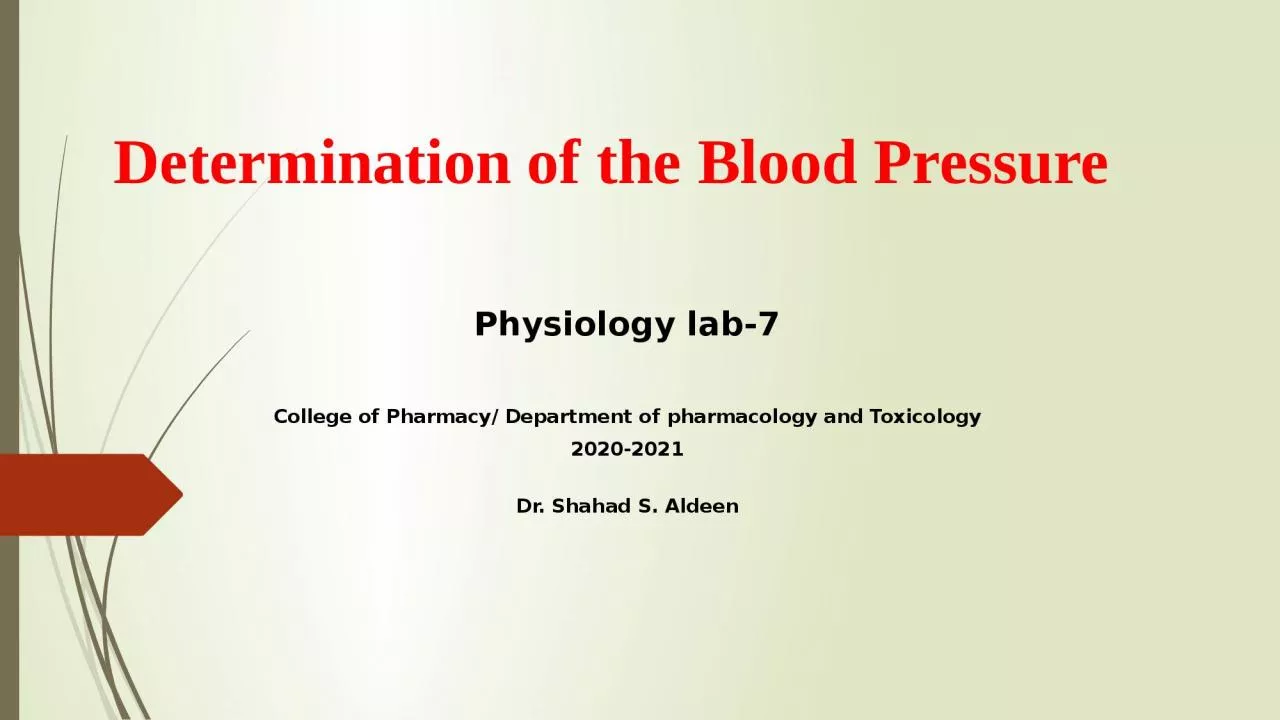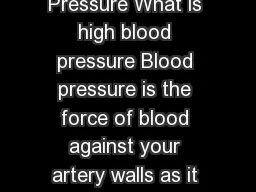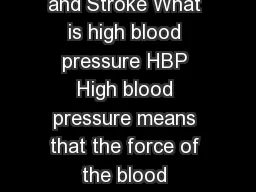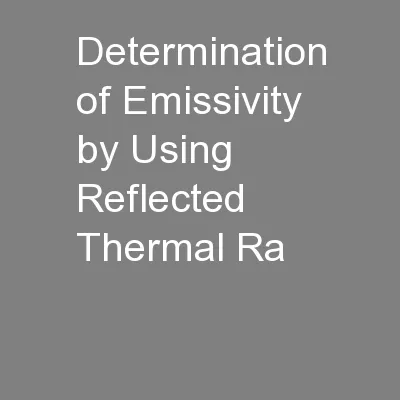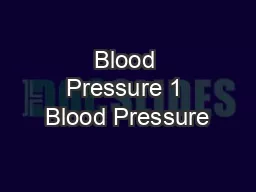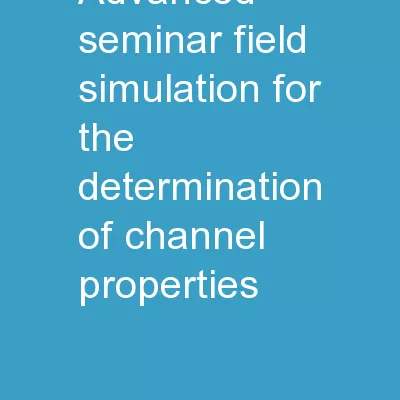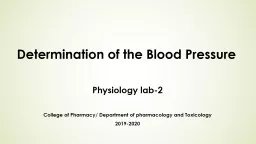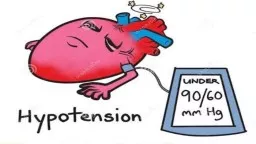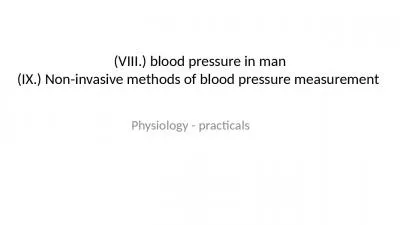PPT-Determination of the Blood Pressure
Author : julia | Published Date : 2022-06-11
Physiology lab7 College of Pharmacy Department of pharmacology and Toxicology 20202021 Dr Shahad S Aldeen DEFINITION Blood pressure BP is the lateral pressure exerted
Presentation Embed Code
Download Presentation
Download Presentation The PPT/PDF document "Determination of the Blood Pressure" is the property of its rightful owner. Permission is granted to download and print the materials on this website for personal, non-commercial use only, and to display it on your personal computer provided you do not modify the materials and that you retain all copyright notices contained in the materials. By downloading content from our website, you accept the terms of this agreement.
Determination of the Blood Pressure: Transcript
Download Rules Of Document
"Determination of the Blood Pressure"The content belongs to its owner. You may download and print it for personal use, without modification, and keep all copyright notices. By downloading, you agree to these terms.
Related Documents

